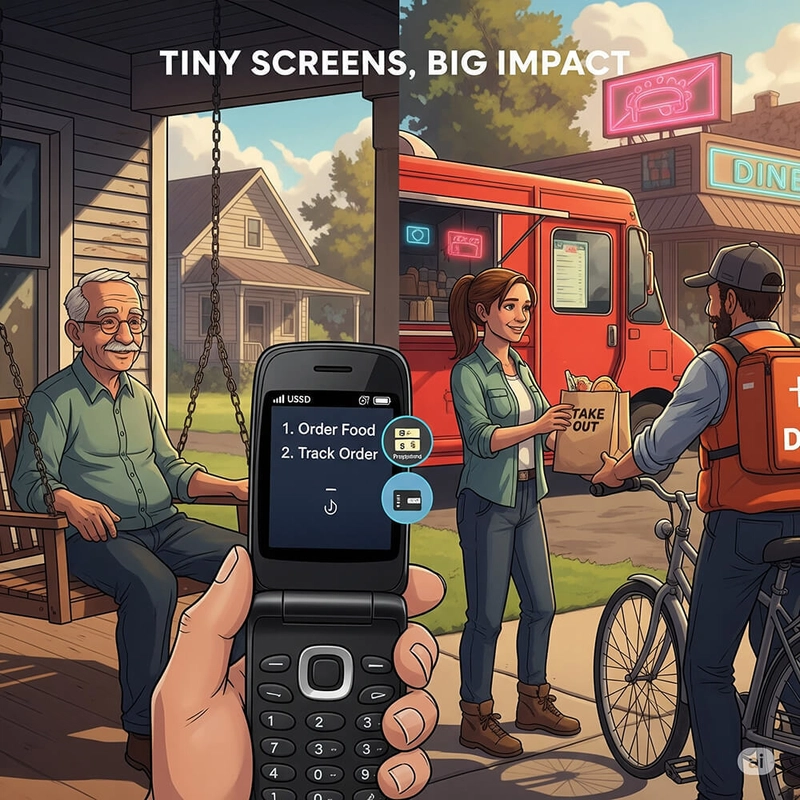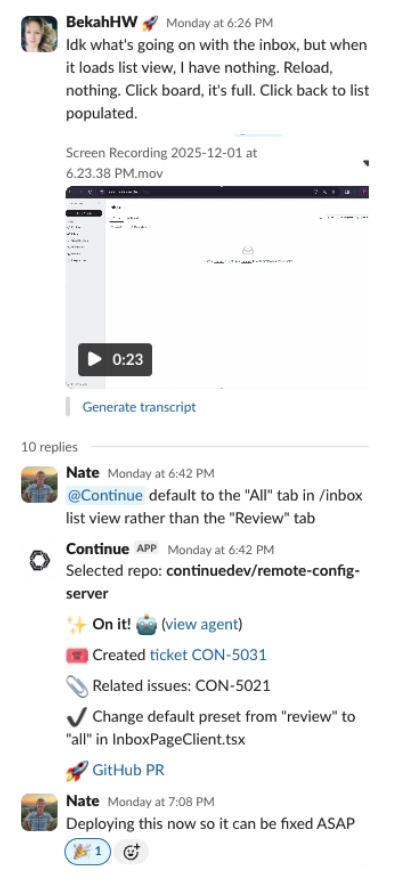Building Food Delivery Apps for Feature Phones: Designing for Constraints, Delivering at Scale
As developers, we often gravitate towards the cutting edge: building sleek, high-performance applications leveraging the latest frameworks, cloud services, and device capabilities. Our canvases are vibrant OLED screens, our tools are powerful SDKs, and our users are typically equipped with gigabytes of RAM and blazing-fast 5G.
But what if your target user demographic primarily relies on a device with a monochrome screen, a T9 keypad, and connectivity akin to dial-up? This isn’t a hypothetical. For millions globally, particularly in emerging markets, the humble feature phone remains the primary gateway to digital services. And for food delivery app development companies aiming for truly universal reach, mastering this domain is not just a business opportunity, but a fascinating engineering challenge.
This post will delve into the practicalities of building robust, scalable food delivery solutions for feature phones. We’ll explore the unique constraints, the architectural patterns that emerge, and the mindset required to deliver impactful services where traditional smartphone apps simply won’t cut it.
The Landscape: Why Feature Phones Remain Critical
Before we write a single line of code, let’s understand the ecosystem:
Market Penetration: Despite smartphone growth, feature phones maintain a significant global presence. They are often the first, and only, digital device many individuals own due to affordability.
Network Resilience: These devices thrive on 2G/3G networks. While 2G networks face sunsetting in some regions, they remain pervasive and reliable in many emerging markets where more advanced infrastructure is patchy or non-existent. Developing for these networks means accounting for high latency and low bandwidth.
Cost-Efficiency: Both device acquisition and data consumption are dramatically lower, making digital services economically viable for a broader population segment.
Simplicity & Accessibility: The straightforward, button-based UI is intuitively navigable for digitally nascent users, lowering barriers to entry.
This reality mandates a different approach to on-demand food delivery app development. We’re not just porting an existing app; we’re reimagining the entire interaction model.
Designing for Extreme Constraints: A Developer’s Mindset Shift
Building for feature phones is an exercise in extreme optimization and server-side intelligence.
1.UI/UX: The Text-First Paradigm
Forget Material Design or SwiftUI. Your UI is typically:
Monochromatic/Low-Res: Limited pixels mean every character counts. Clear, concise text is paramount.
Keypad-Driven: Navigation is via directional buttons and number keys (T9 input for text). Menu structures must be flat, logical, and minimize steps.
Flows over Graphics: The user experience is defined by the conversational flow of interactions, not visual appeal.
Practical Tip: Design flows as state machines. Each user input triggers a state transition, leading to the next text-based prompt or action.
2. Network Protocols: Beyond HTTP/S
While some feature phones support basic WAP/HTML, the workhorses are:
USSD (Unstructured Supplementary Service Data): This is a session-based protocol that allows real-time, interactive communication. It doesn’t require an internet connection and is widely supported on GSM networks. Think of it as a low-level, interactive terminal session.
SMS (Short Message Service): For asynchronous communication, notifications, and simpler command-response interactions.
Practical Tip: Understand the nuances of each. USSD is great for multi-step ordering, while SMS is ideal for confirmations, notifications, and simple one-off commands. Your food delivery app development strategy will likely involve both.
Architectural Patterns: Backend as the Brain
Given the minimal client-side capabilities, the vast majority of the logic, state management, and data processing must reside on the server. This leads to a highly server-driven architecture:
Centralized Business Logic: All menu management, order processing, delivery logistics, user profiles, and payment integrations live on your backend. The feature phone is primarily a thin client for input/output.
Tech Stack: Standard backend frameworks (Node.js with Express, Python with Django/Flask, Ruby on Rails, Go, Java Spring Boot) are well-suited. The key is scalable, asynchronous processing.
USSD/SMS Gateway Integration: This is your critical interface to the mobile network. You’ll need to integrate with a Mobile Network Operator (MNO)’s gateway or a third-party aggregator API that provides USSD and SMS connectivity.
Key Challenge: Gateways can vary in their API structure (HTTP callbacks, custom protocols). Your application needs robust parsing and routing logic to handle incoming messages and generate appropriate responses.
Open Source Tools: Projects like RestComm USSD Gateway (though older, provides insights), or custom implementations using frameworks for handling HTTP callbacks from SMS/USSD aggregators. For simpler cases, direct integration with an SMS API provider (like Twilio, Nexmo, local providers in emerging markets) is common.
State Management for USSD Sessions: Unlike stateless HTTP requests, USSD maintains a session. Your backend needs to track the user’s current position within the menu flow.
Data Stores: Redis, Memcached, or a fast database can be used to store session data. Each user’s unique session ID maps to their current menu state and accumulated order details.
Example Flow:
User dials *FOOD#.
Gateway sends HTTP POST to your backend with
session_id,
phone_number,
input_string
(empty or keyword).
Your backend:
if session_id not exists:
new session, send “Welcome to FoodCo! 1. Order, 2. Track.” (withCON
flag for continuation).
User replies “1”.
Your backend: Update session state, send “Choose cuisine: 1. Local, 2. Fast Food.” (with
CON
flag).
…and so on.
When order is complete: Send “Order confirmed! Your total is $X. Pay via Y. SMS sent.” (with
END
flag to close USSD session).
Payment Integration: Mobile Money is King
Credit cards and online payment gateways are often non-starters. The solution is ubiquitous mobile money:
M-Pesa, bKash, JazzCash (and others): These platforms allow users to store money on their phone and transact via USSD or SMS.
Integration: You’ll typically integrate with the mobile money provider’s API. This often involves:
Initiating a push payment request (MNO pushes a USSD/SMS prompt to the user to confirm payment).
Receiving a callback from the MNO upon payment success/failure.
This seamless integration is crucial for on-demand food delivery app development in these markets.
Scaling & Reliability Considerations
Concurrency: Your backend must handle thousands, potentially millions, of concurrent USSD and SMS requests efficiently. Asynchronous processing and robust queuing systems are vital.
Idempotency: Given unreliable networks, messages might be duplicated. Design your order processing to be idempotent to prevent duplicate orders.
Error Handling & Fallbacks: What happens if a USSD session times out? Or an SMS fails to send? Implement clear error messages and graceful recovery mechanisms.
Monitoring & Analytics: Even with simple interfaces, detailed logging and analytics (order success rates, response times, common user drop-off points) are critical for optimization.
Database Design: Optimized schema for quick lookups of menus and order states. Data normalization for efficiency.
Impact and Opportunities for Developers
Building these systems is not just about overcoming technical hurdles; it’s about making a tangible difference:
Digital Inclusion: You’re empowering individuals who are otherwise excluded from the digital economy to access essential services. This is a powerful form of food delivery application development.
Local Economic Growth: By enabling small local restaurants and street food vendors to reach a wider customer base, you directly contribute to community development. This is a clear case for app development for food business growth beyond traditional models.
Learning Resilient Architecture: The constraints of feature phone development force a disciplined approach to resource efficiency, robust error handling, and scalable backend design – skills that are invaluable for any high-scale system.
As food delivery app development companies look to expand into new markets, especially the growing rural and underserved areas, the demand for developers proficient in these “low-tech” solutions will only increase. This niche is a fertile ground for innovation in food delivery application development and food delivery app development services.
Conclusion
Developing for feature phones is a challenging yet rewarding domain. It forces developers to strip away assumptions, focus on core value, and master the art of delivering complex services through extremely simple interfaces. If you’re looking for a project that pushes your architectural skills, deepens your understanding of scalable systems, and has a profound social impact, dive into the world of feature phone food tech. It’s about designing for constraints and delivering convenience, empowerment, and sustenance at a truly massive scale.


